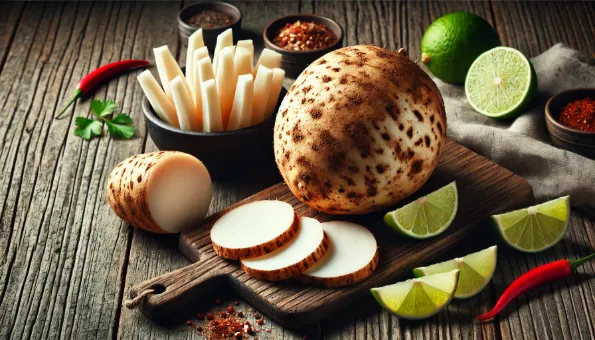Jicama: Nutrition, Benefits and Uses
A crisp, juicy root with a mildly sweet taste; rich in fiber (inulin), vitamin C, and naturally low in carbs.

Introduction
Jicama (Mexican yam bean) is a root vegetable native to Mexico. It has a **crunchy texture** and subtly sweet flavor—great raw or lightly cooked.
Nutrition Facts
High in **fiber (inulin, a prebiotic)** and **vitamin C**, plus **potassium**; **low in calories** and **gluten-free** with **low net carbs**.
Benefits
- **Supports gut health** via prebiotic inulin
- **Low glycemic impact**, fits low-carb/keto diets
- **Vitamin C** aids immunity and antioxidant defense
- **Hydrating** and satiating due to water and fiber
Possible Drawbacks
- **Large portions** may cause gas/bloating (inulin)
- Rare **allergic reactions**
- **Leaves/seeds are not edible**—consume the root only
Culinary Uses
Enjoy **raw** with lime and chili, toss into salads and salsas, or **stir-fry/roast** as a potato alternative in tacos, bowls, and side dishes.
Fun Fact
In Mexico, street vendors serve jicama sticks with **lime, chili powder, and salt**.
- 1. Jicama
jicama (Mexican yam bean)

